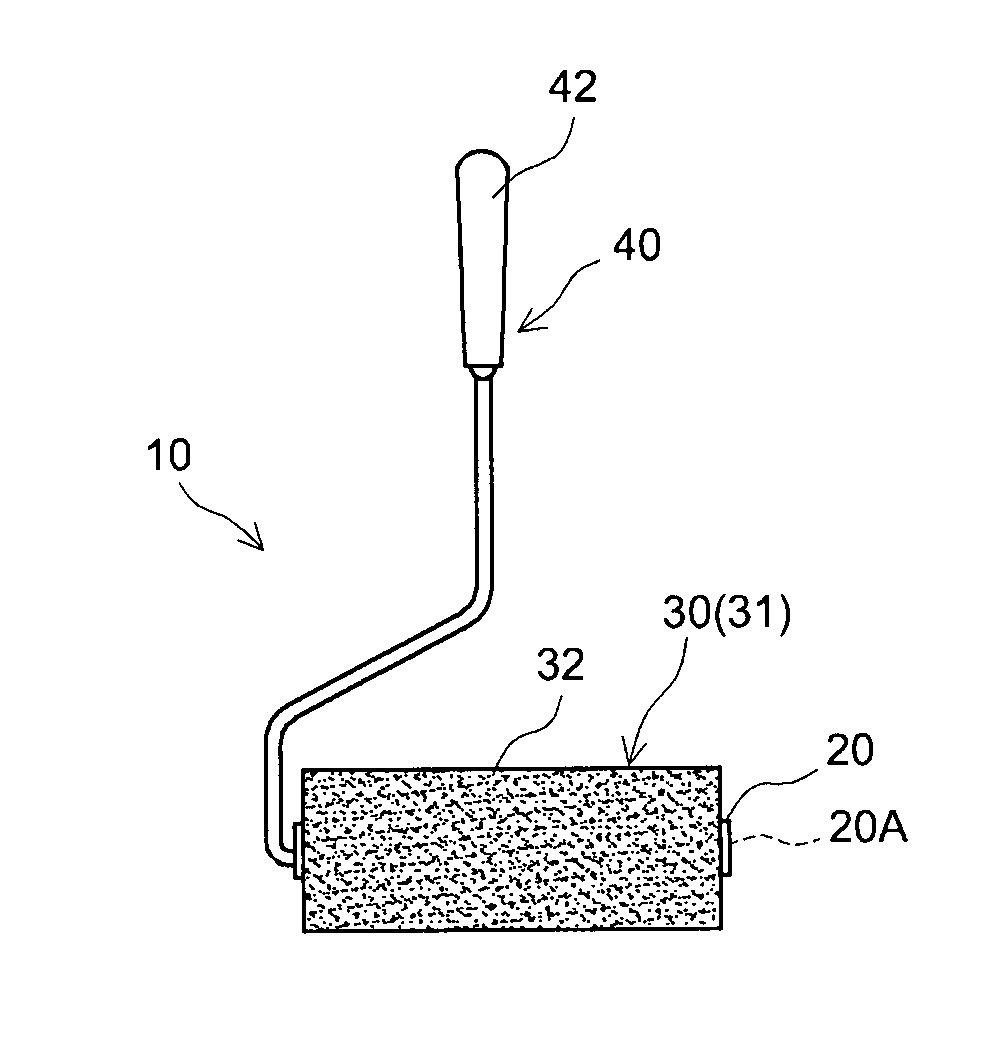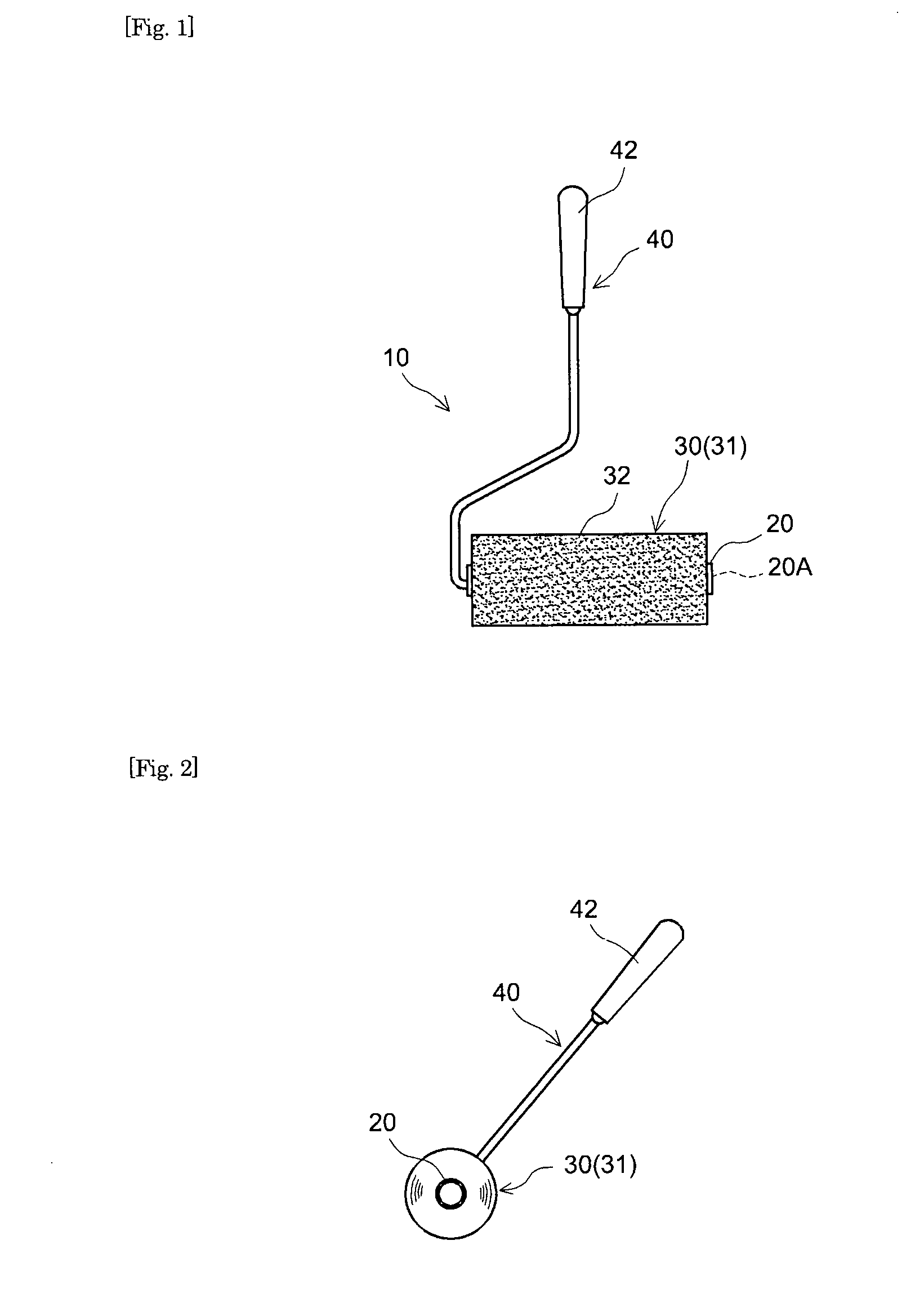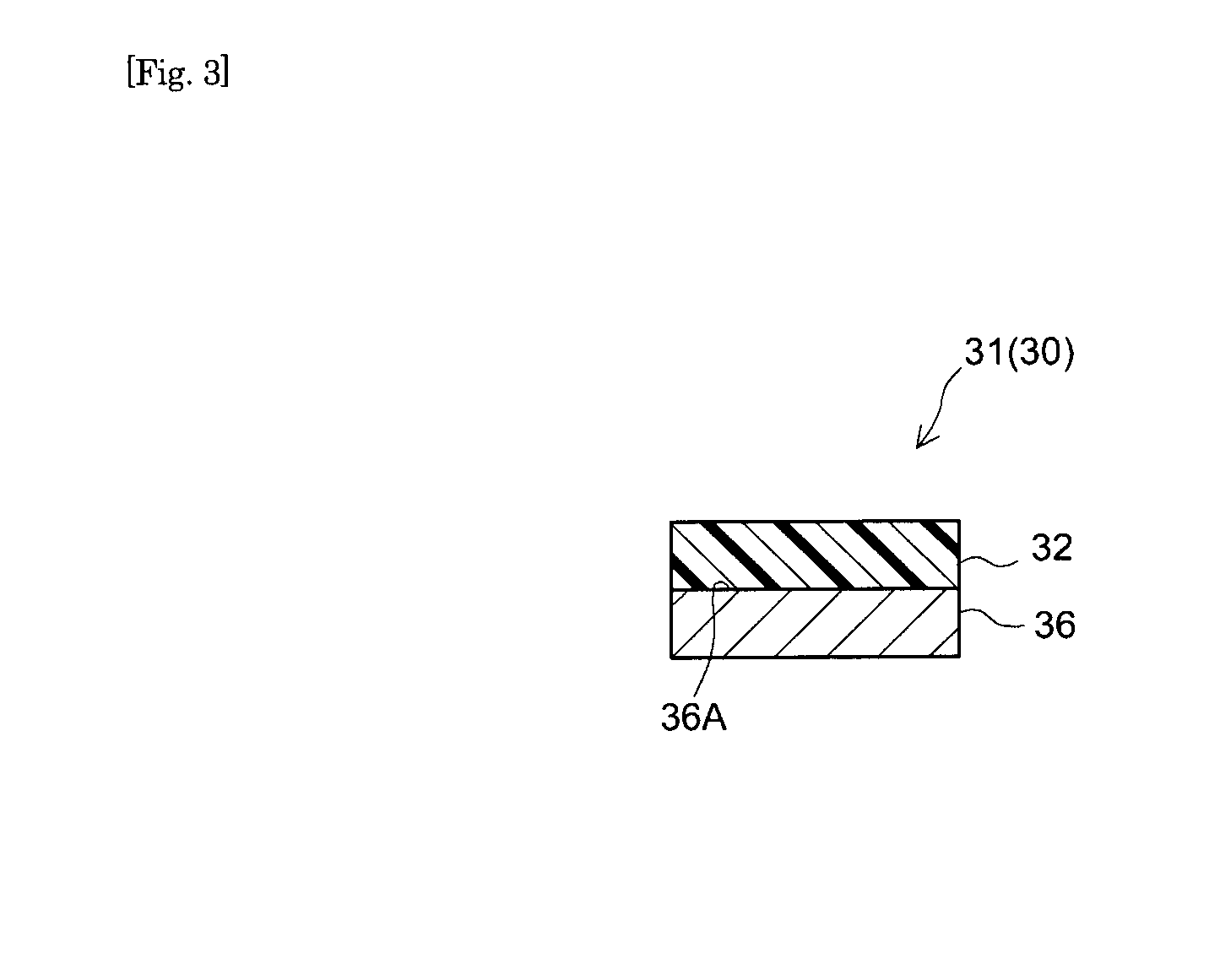Sticky cleaner for removing organic dirt
a cleaner and organic technology, applied in the field of sticky cleaners, can solve the problems of easy attraction of dust and organic dirt, degradation of the exterior of the detergent, and inconvenient use of wiping off dirt with a wipe, so as to improve the workability of cleaning, remove organic dirt, and reduce the chance of getting peeled off
- Summary
- Abstract
- Description
- Claims
- Application Information
AI Technical Summary
Benefits of technology
Problems solved by technology
Method used
Image
Examples
example 1
[0128]The acrylic polymer A heated into a molten state was applied to a surface of a 38 μm thick PET support substrate sheet (width: approximately 8 cm) to fabricate a single-faced PSA sheet having a PSA layer of about 50 μm in thickness (adhesive thickness) formed on one face of the support substrate. The resulting single-faced PSA sheet was wound around the surface of a drum-shaped holding member (20 mm diameter) to form a PSA sheet roll. The holding member was installed on an end of a grip member in a freely rotatable (rolling) manner to construct a cleaner as schematically shown in FIGS. 1 and 2.
example 2
[0129]Using the acrylic polymer B in place of the acrylic polymer A, but otherwise in the same manner as Example 1, a cleaner according to this example was constructed.
example 3
[0130]100 parts of the acrylic polymer A and 30 parts of a plasticizer “MONOCIZER W-242” (diisononyl adipate) available from DIC Corporation were mixed to prepare a hot melt acrylic PSA. The acrylic PSA in a molten state was applied to a surface of a 38 μm thick PET support substrate sheet (width: approximately 8 cm) to fabricate a single-faced PSA sheet in which a PSA layer of about 50 μm thickness is formed on one face of the support substrate. Using this single-faced PSA sheet, but otherwise in the same manner as Example 1, a cleaner according to this example was constructed.
PUM
| Property | Measurement | Unit |
|---|---|---|
| adhesive strength | aaaaa | aaaaa |
| diameter | aaaaa | aaaaa |
| diameter | aaaaa | aaaaa |
Abstract
Description
Claims
Application Information
 Login to View More
Login to View More - R&D
- Intellectual Property
- Life Sciences
- Materials
- Tech Scout
- Unparalleled Data Quality
- Higher Quality Content
- 60% Fewer Hallucinations
Browse by: Latest US Patents, China's latest patents, Technical Efficacy Thesaurus, Application Domain, Technology Topic, Popular Technical Reports.
© 2025 PatSnap. All rights reserved.Legal|Privacy policy|Modern Slavery Act Transparency Statement|Sitemap|About US| Contact US: help@patsnap.com



